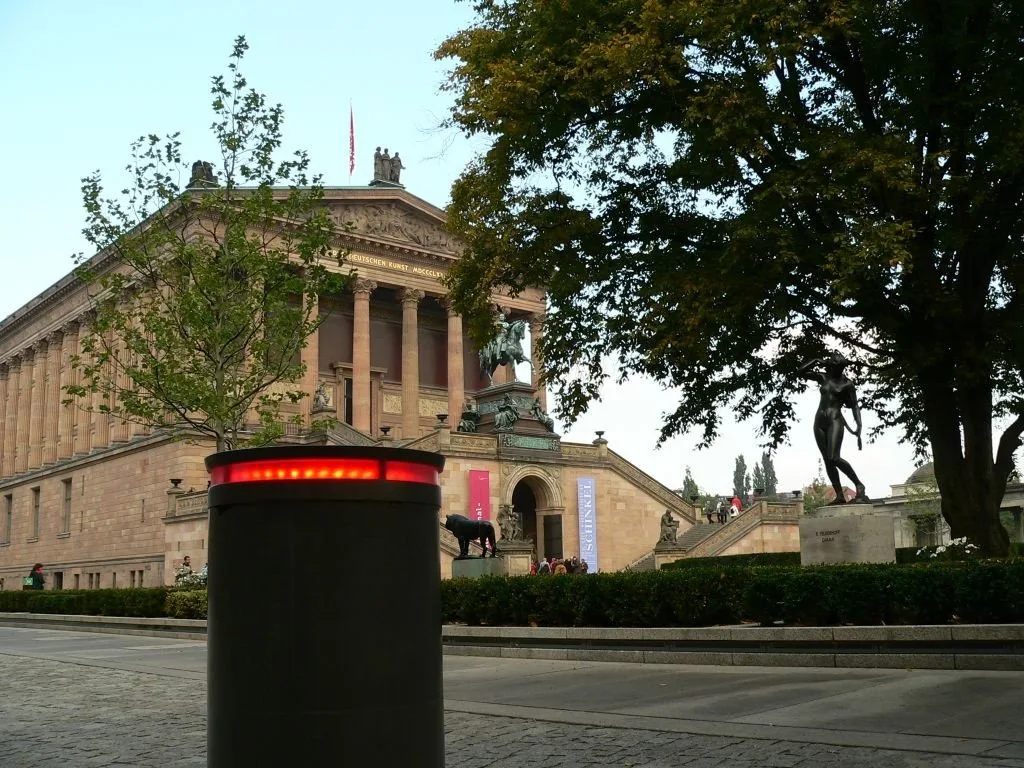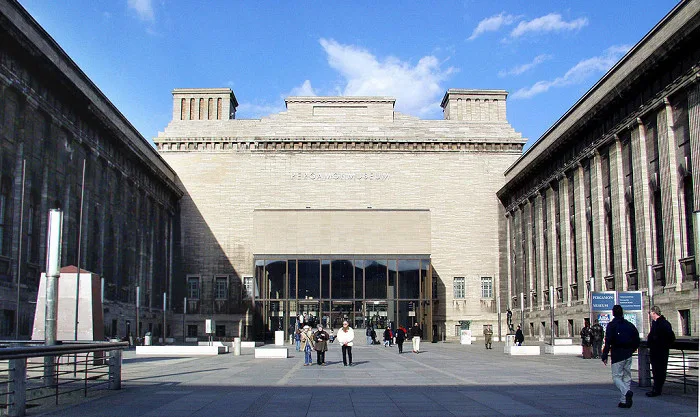Museum Island is a museum ensemble of five historic buildings in Berlin, on Spreeinsel Island, which has been listed as a UNESCO World Heritage Site since 1999. Even though the buildings of the institutions do not occupy the entire area of the island, but only its northern tip, the study of museum areas, as well as the antiquities exhibited in them, cannot be included in the timing of a standard excursion. Accordingly, if you are eager to get to know the unique artifacts of the Spreeinsel in more detail, you will have to stay in Berlin for a couple of days.
 |
| Museum Island Berlin |
General Information
Museum Island can be called a hymn to the German passion for orderliness. And that's not sarcasm. The idea to turn a swampy area in the middle of the Spree into the most “fishy” place in terms of attendance, placing five of the best museums on it, could come up only with the descendants of Goethe and Schiller. However, the choice of location for museum expositions was not entirely accidental. It was from the Spreeinsel, or rather, from the fishing village of Cologne located on it (not to be confused with the city of the same name), that the history of Berlin began.
During its existence, Museum Island has experienced both periods of ups and downs. For example, during the Second World War, many of the collections of Berlin museums were either stolen or irretrievably lost as a result of destruction. As for the modern look of one of the most "profitable" attractions in Germany, it still continues to change. Since the early 2000s, the area and buildings of Museum Island have been subject to a renovation program, which has resulted in the rise of several new buildings on the north side of the Spreeinsel, while the former ones have been expanded and restored. The most notable building of recent years is the James Simon Gallery. This snow-white building with an elegant colonnade has not yet been commissioned, but shortly it will become the main entrance to the island, which will house an information center and an underground boulevard that will take you to any of the five museums.
 |
| Museum Island Berlin |
History of Museum Island
The starting point in the biography of one of the largest sights of Berlin is considered to be 1797, when King Friedrich Wilhelm II of Prussia and professor of art history Alois Hirt agreed to open a museum of antiquity. The northern tip of Spreeinsel Island was chosen as the place for the future exposition, where the City Palace had already been built and the romantic Lustgarten Park had been laid out.
Work on the construction of new buildings was delayed due to the difficult terrain - the Kupfergraben canal had to be leveled. As a result, the first public institution on the Spreeinsel was the Old Museum, whose construction was completed by 1830. Then things went a little faster. In 1859, the New Museum opened on the island, followed by the buildings of the Old National Gallery and the Bode Museum. The most belated on this list was the Pergamon Museum, which opened its doors only in 1930.
After the National Socialists came to power, Museum Island began to receive increased attention. Hitler's Reichsministers and architects even managed to sketch out a rough plan for the reconstruction of the Spreeinsel, where it was planned to erect 4 more palaces for expositions. But with the beginning of World War II, the projects had to be pushed aside, especially since by 1945 all the buildings of the island lay in ruins - in total, 70% of the museum buildings were destroyed. There was no hurry to restore historical objects in post-war Germany - there were no funds. As a result, the first serious attempts to restore the Museum Island to its former appearance were made in the late 80s, and the restoration of the exhibition halls and individual parts of the buildings is still ongoing.
 |
| Museum Island Berlin |
Museums of the island
The old-timer Spreeinsel - the Old Museum - is identified by the Greek style in the design and several Ionic columns. From 2000 to 2006, the building was under restoration, but today all the halls of the institution are open to the public. It’s worth visiting the Old Museum just because it houses perhaps the world’s largest collection of masterpieces of ancient art. Greek statues, Fayum portraits, Etruscan vases, as well as countless miniature (and not so) figurines from the category of "children under sixteen" - impressions will last for a long time, even if you are not a historian at all.
For more than half a century, the New Museum remained the object of heated debate among the townspeople. After the war, the building was not touched for a long time, as a result, the majestic ruins spoiled the overall picture of the Museum Island, which, of course, upset art critics. In the 80s, Berlin architects nevertheless restored the building, but with an extraordinary approach to business. Well, to be more precise, the builders deliberately bypassed the areas with flying-off plaster on the facade and sooty sections of the columns - according to the architect David Chipperfield, this was the best solution to restore the exterior and interior of the museum, it would be necessary to distort its historical appearance. In addition, such deliberate incompleteness was supposed to remind visitors of the difficult part of the country.
Today, the building of the New Museum has two permanent exhibitions - one telling about the culture and writing of Ancient Egypt, as well as an exhibition dedicated to the prehistoric era and early history. Both are worth a visit, if only because of the opportunity to see the legendary bust of Nefertiti and the pseudo-Trojan treasures dug up by G. Schliemann on the shores of the Aegean Sea. Or rather, their skillful replicas, since the original jewelry was taken out after the victory in the USSR and got lost there.
The closest neighbor of the New Museum is the Old National Gallery. A beautiful light building with a Roman-style apse has become the main repository of the Prussian cultural heritage. The basis of local funds is the work of Prussian artists with rare inclusions of masterpieces by Degas, Renoir, Cezanne, and Manet. The most valuable exhibits of the museum are the wooden canvas "Isle of the Dead" by Böcklin, Rodin's "Thinker", and the painting "In the Winter Garden" by Manet.
The brightest representative of the neo-baroque style, the Bode Museum was formerly called the Kaiser Friedrich III Museum since most of its exhibits were owned by the king. Today, the Bode exposition complex includes as many as three museums - the Museum of Byzantine Art, the Coin Office, and the Collection of Sculptures. The main object of pride for the restorers who worked to restore the historical appearance of the building is Tiepolo's Study, "reanimated" with the help of a single photograph (the real study with original frescoes disappeared in the whirlwind of World War II).
The fifth "inhabitant" of Spreeinsel is the Pergamon Museum, aka Pergamon, the only museum on the island with a Russian audio guide. Initially, the building was built for the sake of one exhibit - the Pergamon Altar, which was taken out by German archaeologists from Asia Minor in a scandal. Subsequently, no less massive masterpieces of ancient architecture, such as the Ishtar Gate, the Babylonian processional road (reconstruction), and the market gates of Miletus, were added to this unique work of art in every sense. At this stage, the Pergamon Museum has three main collections - classical antiquities, Islamic art, and the ancient Near East.
Important: The Pergamon Altar is not available for visiting until 2023 - restoration work is underway on the exhibit. To compensate for the lack of opportunity to admire the ancient structure, you can visit the panorama depicting and voicing the daily life of the disappeared city of Pergamos. The 24-meter presentation canvas was created by architect Yadegar Azizi and is considered the largest museum panorama in the world.
 |
| Museum Island Berlin |
Visiting rules, opening hours, tickets
Photographing of any exhibits is allowed on the Museum Island, except the bust of Nefertiti. And this is not a standard formality. Tourists trying to stealthily capture the imperishable beauty of the Queen of Egypt are closely watched here. In addition, keep in mind that individual museum premises are still under restoration and are not always available for inspection - the reconstruction project launched by the Berlin authorities is still ongoing.
Opening hours of the museums on the Spreeinsel: daily, from 10:00 to 18:00. The exception is Thursday when all institutions are open until 20:00, and Sunday is a public holiday. Entrance tickets can be purchased at the box office on the spot - the cost is from 10 to 12 EUR. However, if you plan to visit several exhibitions, it is wiser to get a three-day Berlin Museum Pass for 29 EUR, which provides access to 30 of the city's museums and exhibition halls, including the Museum Island.
How to get there
From the Brandenburg Gate to the Museum Island - about 10-15 minutes on foot. An alternative to walking is trams (routes, M1, M4, M5, M6), you need to get off at the Hackescher Markt stop. The U2 metro stations closest to the island are Spittelmarkt, Markishes Museum, Klosterstrasse, Hausvogteilplatz; U6 - Friedrichstrasse. In addition, buses run to the Museum Island - routes No. 100, 147, 200.